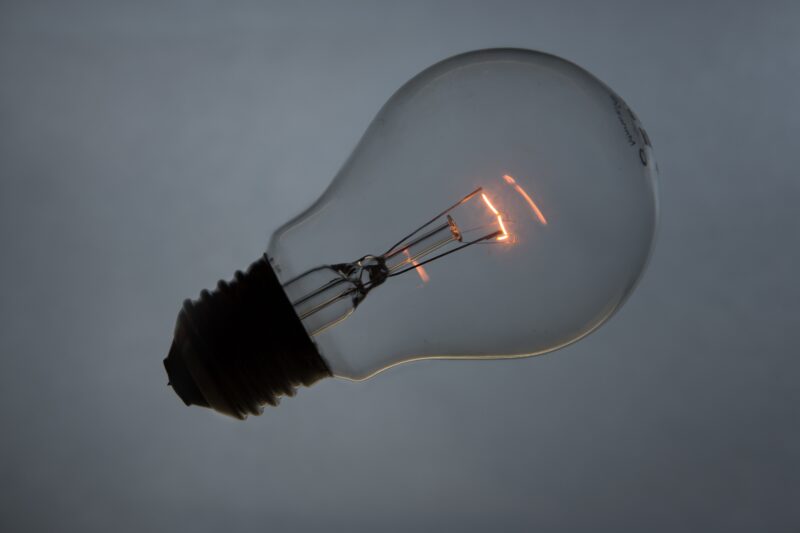Biden’s Light Bulb Ban Just Went Into Effect, Here’s What You Should Know
In April 2022, the Department of Energy, under Biden’s administration, introduced a new rule that would make it illegal to sell incandescent light bulbs across all states in the US. The ban is framed as a cost-saving and energy efficiency measure to benefit American consumers and reduce carbon emissions. However, critics argue that it represents a paternalistic approach, suggesting that the government believes individuals are incapable of making energy-efficient choices on their own.
According to U.S. Secretary of Energy Jennifer M. Granholm, raising energy efficiency standards for light bulbs would result in $3 billion in annual savings for American consumers while significantly reducing domestic carbon emissions. The government’s claim is that by phasing out incandescent bulbs and promoting more energy-efficient alternatives like LEDs, they are helping both the environment and people’s wallets.
One of the primary concerns raised by opponents of the incandescent light bulb ban is the loss of choice in the marketplace. Regardless of personal preferences or the perceived superiority of incandescent bulbs, the government’s decision restricts the availability of these traditional lighting fixtures. This limitation raises questions about individual freedom and the ability to make decisions based on personal preferences and needs.
Congressman Brian Fitzpatrick, a vocal critic of the ban, sarcastically highlighted this issue during a hearing, stating, “I’m happy the Department of Energy is out here making sure that we can all save money because we’re too dumb to figure out how to do it ourselves.” This statement encapsulates the sentiment of those who believe that the government’s intervention is unnecessary and infringes upon their right to choose.
Proponents of the incandescent light bulb ban argue that the transition to more energy-efficient lighting options, such as LEDs, will have long-term benefits for both consumers and the planet. Granholm, in her statement, emphasized that the lighting industry is already embracing energy-efficient products, and this ban will accelerate progress towards a better future.
According to the Energy Department, the ban is projected to reduce carbon emissions by 222 million metric tons over the next 30 years. This reduction is equivalent to the emissions generated by 28 million homes in a year. While this may seem like a significant achievement, critics point out that China alone released 11.47 billion metric tons of carbon dioxide emissions in 2021, raising doubts about the ban’s impact on global emissions.
Incandescent light bulbs hold a unique place in the history of lighting technology. Developed by Thomas Edison, these bulbs have been used for over a century and are known for their warm and familiar glow. Some individuals argue that the quality of light emitted by incandescent bulbs is superior to that of LEDs, citing personal experiences such as reduced eye strain and migraines.
While incandescent bulbs may not be as energy-efficient as their LED counterparts, they have their own charm and aesthetic appeal. The ban on these bulbs represents a departure from tradition and nostalgia, as well as a shift towards a more modern and technologically advanced lighting landscape.
The incandescent light bulb ban has implications for both consumers and businesses. Consumers may need to adapt to the new lighting options available, which can include a wide range of LED bulbs with varying brightness levels and color temperatures. This transition may require adjusting to different lighting aesthetics and potentially higher upfront costs for LED bulbs.
For businesses, the ban presents both challenges and opportunities. Lighting manufacturers will need to adjust their production lines to focus on energy-efficient alternatives, such as LEDs, to meet consumer demand. This shift in manufacturing practices may lead to job losses in the traditional incandescent bulb sector, while also creating new employment opportunities in the LED industry.

With the ban on incandescent light bulbs, LED technology takes center stage as the primary alternative. LED bulbs offer numerous advantages over traditional incandescent bulbs, including energy efficiency, longer lifespan, and lower operating costs. They also come in a variety of shapes, sizes, and color options, allowing for greater flexibility in lighting design.
Looking beyond LEDs, researchers and innovators are constantly exploring new lighting technologies that could revolutionize the industry. From organic light-emitting diodes (OLEDs) to quantum dot lighting, these advancements hold the promise of even greater efficiency and improved light quality.

